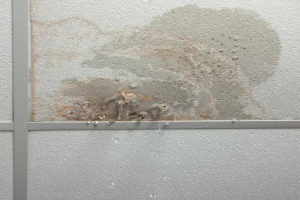 Water damage that occurs in areas we cannot see (i.e. behind walls or under floorboards) can be a huge problem in your Cincinnati home. The excess moisture from hidden water damage gets absorbed in wood, foundation, drywall, and insulation, and the longer it goes unnoticed and untreated, the more breakdown it causes in these materials. Hidden water damage can also lead to mold growth that can spread throughout the home. Allergic reactions such as sneezing, coughing, shortness of breath, and other respiratory problems are common symptoms of mold exposure, and, if unresolved, will worsen over time. It is critical to begin the restoration process as soon as water damage is noticed. Without immediate action, the water damage restoration process will take longer, be more complicated, and more costly.
Water damage that occurs in areas we cannot see (i.e. behind walls or under floorboards) can be a huge problem in your Cincinnati home. The excess moisture from hidden water damage gets absorbed in wood, foundation, drywall, and insulation, and the longer it goes unnoticed and untreated, the more breakdown it causes in these materials. Hidden water damage can also lead to mold growth that can spread throughout the home. Allergic reactions such as sneezing, coughing, shortness of breath, and other respiratory problems are common symptoms of mold exposure, and, if unresolved, will worsen over time. It is critical to begin the restoration process as soon as water damage is noticed. Without immediate action, the water damage restoration process will take longer, be more complicated, and more costly.
Unfortunately, water damage is not easily noticed in hidden areas. To help you discover water damage faster and ward off extensive damage, pay close attention to the signs of water damage in your home. If you notice these signs, you can take action and begin the restoration process faster.
Leaking water within walls and ceiling will get absorbed by the sheetrock and drywall. As this water is absorbed, it causes noticeable stains and discoloration. If you notice spots on walls or ceilings that are new, continually growing larger, or changing color (getting darker), it is usually a good indication that there is hidden water damage. Take note as to where the stains are, so that the restoration process can happen, without having to take down your entire structure.
As water is absorbed by porous materials (insulation, drywall, sheetrock, wood, etc), the excess moisture creates a musty smell. Smells can linger and travel, but if a musty odor is really strong in one particular area, that is a good indication that there is water damage hidden nearby.
Too much moisture build-up behind or inside a wall will eventually cause paint and wallpaper to start bubbling and peeling. If there is visible bubbling and peeling, then sheetrock behind the walls has absorbed too much water for it to maintain, so it begins to soak through the walls. Be sure to look for any flaking, bubbling, or peeling on your walls if you suspect water damage. Most restoration crews can help restore your wallpaper and wall framing.
When porous materials absorb too much water, they begin to curve, warp, and buckle. Excessive warping threatens the structural integrity of the home and can lead to extensive repairs. Check your walls, floors, and ceilings for any signs of warping or buckling, and get them checked immediately if you notice any changes.
Mold growth occurs in areas where excess moisture is present, especially under cabinets, and around bathroom plumbing fixtures (tubs, showers, toilets, etc) and other household appliances. Mold can be black, dark green, white, and may have a fuzzy appearance. If you notice visible mold along baseboards or walls that are not near any plumbing mixtures, there is likely a hidden source of water damage. At the first sight of mold, wherever it may be, call a professional water and mold damage restoration company to get it cleaned up.
If you notice any signs of hidden water damage or suspect there may be water damage in your home, call Flood Restoration Water Removal And Clean-Up Services. We are equipped to handle any size water damage disaster from small drips and leaks to large restoration jobs.